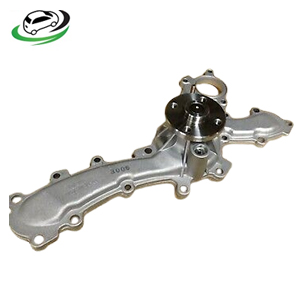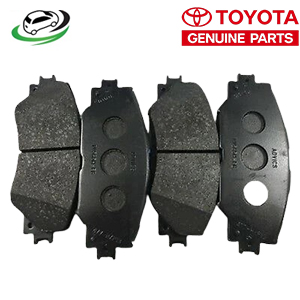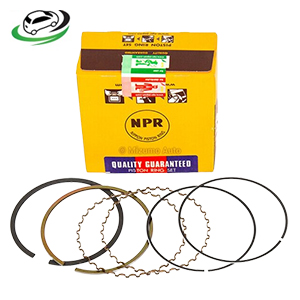-6%
Get Pistons Rings set for 1KD-FTV Engines SDT10175ZY-STD
Piston rings are vital components in internal combustion engines, playing a crucial role in the engine’s performance and longevity. They are responsible for sealing the combustion chamber, controlling oil consumption, and maintaining the overall efficiency of the engine. This detailed explanation will delve into the various types of piston rings, their functions, maintenance considerations, and the importance of selecting the right rings for specific applications.
1. What Are Piston Rings?
Piston rings are circular bands made of metal that fit into grooves on the piston. Each piston typically has two to four rings, depending on the engine design. These rings are critical in ensuring that the combustion process occurs efficiently and that engine oil is properly managed.
2. Functions of Piston Rings
Piston rings serve three primary functions:
- Sealing the Combustion Chamber: The most important function of piston rings is to create a seal between the piston and the cylinder wall. This seal prevents the combustion gases from escaping into the crankcase, ensuring that the engine operates efficiently. A good seal is essential for maintaining the engine’s power output and fuel efficiency.
- Controlling Oil Consumption: Piston rings also control the amount of oil that reaches the combustion chamber. This is particularly important because excessive oil consumption can lead to higher emissions and decreased performance. The oil control ring, typically located at the bottom, scrapes excess oil from the cylinder wall and returns it to the sump, preventing it from burning in the combustion chamber.
- Heat Transfer: Piston rings aid in transferring heat away from the piston to the cylinder wall. This helps maintain optimal operating temperatures within the engine, reducing the risk of overheating and improving the overall lifespan of the engine components.
3. Types of Piston Rings
Piston rings can be categorized into three main types based on their function:
- Compression Rings: These rings are positioned above the oil control ring and are primarily responsible for sealing the combustion chamber. They are designed to withstand high pressures and temperatures while maintaining a tight seal. Compression rings are typically made of materials like cast iron or steel and may be coated with specialized materials to enhance durability.
- Oil Control Rings: Located at the bottom of the piston, oil control rings manage the lubrication between the piston and cylinder wall. These rings are designed to scrape excess oil from the cylinder wall, preventing it from entering the combustion chamber. Oil control rings usually have a more complex design, often featuring multiple components, including a scraper ring and expander.
- Wiper Rings: Wiper rings, sometimes considered a subtype of oil control rings, help in scraping excess oil from the cylinder walls. They ensure that the right amount of oil remains on the cylinder wall for lubrication while preventing oil from entering the combustion chamber. These rings are often used in high-performance and racing engines.
4. Material Composition
The materials used in piston rings are crucial for their performance. Common materials include:
- Cast Iron: This is a traditional material for piston rings due to its excellent wear resistance and low cost. Cast iron rings are often used in standard passenger vehicles.
- Steel: Steel rings are typically used in performance engines due to their strength and ability to withstand higher temperatures. They are more durable than cast iron but can be more expensive.
- Coatings: Many modern piston rings come with specialized coatings to enhance their performance. For example, chrome or molybdenum coatings can improve wear resistance and reduce friction.
5. Signs of Worn Piston Rings
Worn or damaged piston rings can lead to various engine issues. Common signs of worn piston rings include:
- Increased Oil Consumption: If the engine consumes more oil than usual, it may indicate that the oil control rings are failing.
- Blue Smoke from the Exhaust: Burning oil in the combustion chamber often results in blue smoke being emitted from the exhaust. This is a clear sign that oil is leaking past the piston rings.
- Loss of Power and Efficiency: Worn piston rings can lead to a loss of compression, resulting in decreased engine power and fuel efficiency.
- Rough Engine Idle: An engine that runs roughly or inconsistently may indicate issues with the piston rings.
6. Maintenance Considerations
To ensure the longevity and optimal performance of piston rings, proper maintenance practices should be followed:
- Regular Oil Changes: Keeping the engine oil clean and at the proper level is essential for preventing premature wear of piston rings. Regular oil changes help maintain oil viscosity and reduce sludge buildup.
- Engine Tuning: Regular engine tuning can help identify issues before they become severe. This includes checking the fuel system, ignition system, and ensuring that the engine runs smoothly.
- Avoiding Overheating: Engine overheating can lead to warping and damage to the piston rings. Ensuring the cooling system is functioning properly and monitoring engine temperatures is vital.
7. Importance of Selecting the Right Piston Rings
Choosing the right piston rings is critical for optimal engine performance. Factors to consider include:
- Engine Type: Different engines have varying requirements for piston rings. Performance engines may require specialized rings that can withstand higher temperatures and pressures.
- Material and Coating: The choice of material and coatings can significantly impact the performance and longevity of piston rings. It’s essential to select rings that are compatible with the specific engine application.
- Clearances: Proper clearances between the piston rings and the cylinder wall are necessary for optimal sealing and performance. Using the correct ring gap specifications is crucial for maintaining engine efficiency.
8. Installation Considerations
Proper installation of piston rings is crucial to their performance. Some key considerations include:
- Orientation: Ensure that the rings are installed in the correct orientation, as indicated by any markings. Incorrect installation can lead to premature failure.
- Ring Gap: The gap in the piston rings should be set according to manufacturer specifications. A gap that is too small can lead to ring binding, while a gap that is too large can result in poor sealing.
- Use of Lubricants: Lubricating the piston and rings during installation can help prevent damage and ensure smooth operation when the engine starts.
9. Conclusion
Piston rings play an essential role in the performance and longevity of internal combustion engines. Understanding their functions, types, and maintenance requirements is crucial for anyone involved in automotive repair or performance tuning. By selecting the right piston rings and adhering to proper maintenance practices, vehicle owners can ensure their engines operate efficiently and last for many miles. Regular inspections and timely replacements of worn rings can help maintain engine health, reduce oil consumption, and prevent costly repairs in the long run.
Follow us on Facebook for more parts.




Reviews
Clear filtersThere are no reviews yet.